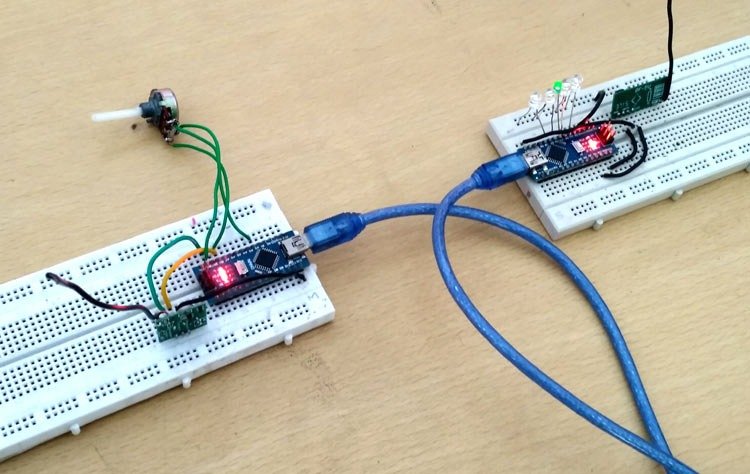Antennino: Arduino-RF Board for Wireless IoT Projects
Introduction: A Fusion of Arduino and Wireless Innovation
In today’s era of connected devices and the Internet of Things (IoT), having a low-cost, low-power, and versatile board is a game-changer. Enter Antennino, a unique combination of Antenna and Arduino, designed to enable wireless communication while remaining fully compatible with the Arduino IDE. Antennino allows engineers, hobbyists, and IoT enthusiasts to design remote sensors, wireless actuators, and data collection systems efficiently and cost-effectively.
This multifunction board combines sensor integration, wireless communication, and low-power design, making it ideal for projects that require long-term deployments without frequent battery replacements. Whether you’re building a temperature monitoring system, a smart home device, or an environmental data logger, Antennino offers an accessible and powerful solution.
What is Antennino?
Antennino is a microcontroller-based board that merges Arduino’s simplicity with advanced wireless capabilities. At its core is the ATmega328P microcontroller equipped with PicoPower technology, enabling efficient energy management. The board supports:
- Remote Module Mode: Collects environmental data (temperature, light, vibration) and sends it wirelessly to a gateway.
- Gateway Mode: Receives and processes data from multiple Antennino modules, optionally integrating with Raspberry Pi or Arduino Uno for further analysis and visualization.
This dual functionality allows for scalable IoT networks where multiple remote sensors can communicate with a central hub, offering flexibility for various applications.
Key Features of Antennino
Antennino packs numerous features into a compact form factor:
- ATmega328P Microcontroller: Same as Arduino Uno, fully compatible with Arduino IDE.
- RFM69 Transceiver: Operates at 433 MHz with AES hardware encryption for secure wireless communication.
- Flash Memory: AT25F512B (512 Kbit) for data logging or Over-the-Air (OTA) firmware updates.
- Integrated Sensors: DS18B20 temperature sensor and photoresistor for light detection.
- Grove Connectors: Four ports for RS232, I²C, generic I/Os, and analog inputs.
- OLED Display Support: Optional display for gateway operation.
Power Options:
- Two AA batteries (1.5V) or rechargeable batteries (1.2V)
- External supply: 3.6–12 V
- Direct 3.3V input (bypassing onboard regulators)
Low-Power Management: Efficient sleep modes and integration with **TPL5110 digital timer for ultra-low standby consumption.
These features make Antennino an ideal board for creating remote sensors, smart devices, and IoT systems without compromising on reliability or power efficiency.
Wireless Communication: The RFM69 Advantage
A standout aspect of Antennino is its RFM69 wireless module, which provides secure and efficient communication for IoT networks:
- Frequency: 433 MHz, suitable for moderate-distance wireless data exchange.
- AES Encryption: Hardware-level encryption ensures data security.
- Automatic Transmission Control (ATC): Reduces energy consumption by adjusting the transmission power based on distance.
- SPI Interface: Uses MISO, MOSI, SCK, and NSS pins for communication with the microcontroller.
- Interrupt Notifications: Pin DIO0 allows real-time response to incoming messages.
The RFM69 module makes Antennino suitable for home automation, environmental monitoring, and remote data collection.
Low-Power Management: Extending Battery Life
Energy efficiency is critical for wireless modules, especially when deployed in remote locations. Antennino utilizes several low-power strategies:
- PicoPower ATmega328P: Offers deep sleep modes to minimize energy usage.
- External Timer TPL5110: Controls the power line, consuming only **35 nA** in standby, allowing all other components to be powered down until needed.
- Interrupt-Driven Wake-Up: Allows the microcontroller to wake up from low-power mode based on sensor triggers or external signals.
- Watchdog Timer (WDT): Ensures periodic wake-ups for scheduled data collection while maintaining low energy usage.
These techniques allow Antennino to run for months on small batteries, making it highly suitable for long-term remote sensing projects.
Practical Applications of Antennino
Thanks to its features and wireless capabilities, Antennino can be applied in numerous areas:
- Environmental Monitoring: Measure temperature, light, and other parameters remotely for agriculture, weather stations, or scientific research.
- Smart Home Automation: Control lighting, alarms, or appliances wirelessly.
- Security Systems: Deploy motion, vibration, or door/window sensors connected to a central gateway.
- Data Logging: Store sensor readings locally or transmit them to a central database for analytics.
- IoT Gateways: Aggregate data from multiple remote modules for visualization, web interface integration, or cloud storage.
- Wireless Actuators: Remotely control devices using the board’s GPIO pins and wireless communication.
Antennino’s flexibility allows both beginners and professionals to develop innovative projects without requiring advanced hardware expertise.
Integration with Gateways: Arduino and Raspberry Pi
For full IoT deployment, Antennino modules communicate with a gateway:
- Antennino as Gateway: Equipped with a display and mains power, suitable for central monitoring.
- Arduino Uno + RFM69: Cost-effective for small networks of sensors.
- Raspberry Pi + RFM69: Offers advanced features like web-based dashboards, secure HTTPS communication, and database storage for collected data.
This integration ensures that your IoT network is scalable, secure, and easy to monitor.
Antenna Design: Maximizing Communication Efficiency
The antenna is a critical component for Antennino’s wireless performance:
- Signal Conversion: Converts electrical signals into electromagnetic waves for transmission and vice versa for reception.
- Electromagnetic Principles: Alternating currents create magnetic fields, which induce electric fields, forming propagating waves.
- Design Optimization: Proper antenna placement and size enhance transmission range and reliability, ensuring stable communication across modules.
Selecting the correct antenna ensures robust connectivity, especially in large-scale wireless networks.
Future Potential of Antennino
As IoT technology evolves, Antennino shows great potential for future developments:
- Integration with AI: Smart processing of sensor data for predictive maintenance or anomaly detection.
- Support for IoT Protocols: MQTT, LoRa, and other protocols for enhanced connectivity.
- Energy Harvesting Solutions: Solar or kinetic energy to extend battery life.
- Custom Modules: Add-on sensors, actuators, and 3D-printed housings for specialized applications.
Antennino is poised to remain a cost-effective, flexible, and powerful solution in the ever-growing IoT ecosystem.
Conclusion
Antennino bridges the gap between Arduino simplicity and advanced wireless IoT capabilities. Its low-power design, integrated sensors, and RFM69 wireless module make it perfect for:
- Remote sensors for environmental and industrial monitoring
- Smart home automation projects
- Security and alarm systems
- Data logging and IoT network applications
By combining affordability, ease of use, and technical versatility, Antennino empowers makers, engineers, and hobbyists to implement sophisticated wireless systems. Whether used as a remote module, a gateway, or an all-in-one IoT solution, Antennino continues to redefine the possibilities of low-power Arduino-compatible boards.






